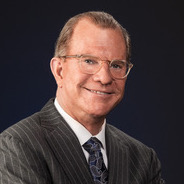7 minutes
Four areas to explore and why you should explore them during your first 100 days as a credit union director
Credit union board turnover is accelerating. Older members are retiring, more boards are actively recruiting younger members, and term limits on service are becoming common.
At the CUES seminars I lead, I see lots of younger members (under 45) coming on board, eager to learn about governance. There are also plenty of older board members joining boards for the first time.
While it’s easy to understand why younger members may not have had governance experience, let’s not overlook that most of our current board members did not have board experience when they were elected, either.
If you’re new to the board, experienced with governance or not, there are a few key areas you might wish to learn about early—say, within the first 100 days of board service. Here are some suggestions and a bit of context for why they are important.
1. Fiduciary Oversight
A fiduciary responsibility is the expectation that one will act in all matters with the best interests of the organization. In governance lingo, it more specifically means boards will pay close attention to financial stability, managing risks and protecting reputation. Early documents you should review include the last three years’ financial performance of the credit union. This will reveal trends around growth and stability. Ask your board’s chair what size the credit union seeks to achieve over the next three to five years and what the strategy is to get there.
When looking into financial performance, including a review of past external financial audits will also help show how your credit union is doing with compliance. Independent external audits by a CPA firm as well as compliance reviews from the state banking commissioner or the National Credit Union Association (depending upon your charter) shed light on the perceived safety and soundness of your credit union. These audits customarily look at the key financial performance and risk indicators of financial institutions and are a good tutorial unto themselves on what you should be tracking. If past audits have identified any weaknesses or concerns, you can see how your credit union has responded.
It’s also important to look at the work of the asset/liability committee to learn how loan policy and practice and investments are managed to limit risks to the credit union. In many cases the asset/liability committee is not the only place “risk” is being discussed, so it’s important to inquire about any other discussions of risk being held throughout the organization and at the board level.
What has the “supervisory committee” been looking at? Looking at a year of minutes should help you here. If there is a risk management committee, looking at past minutes will also provide a historical perspective on any concerns and follow up actions. If there is not a risk committee, asking the board’s chair how and where organizational risk issues are raised and considered might be enlightening. Certainly asking specifically how the board gets briefed on cybersecurity efforts may provide insight into how the board and organization approaches big risks.
Reputational risk refers to the potential for negative press coming from the conduct of the credit union. Asking about how “whistle blowers” are protected (there should be an organizational policy), how personnel grievances get resolved (also another policy) and if there have been any recent history (last three years) of either whistle blower activity or lawsuits by past employees can give a snapshot for this risk area.
2. Service and Value
Credit unions generally get high marks on service quality. Fewer CUs ask members the “value” question: “Are we meeting your most important needs?”
A quick-start director orientation might also look at member satisfaction scores over the last three years to glimpse how well your credit union is performing and to prepare yourself to be an informed board representative in the community.
It is likely more important to find out how your CU gathers data on what members feel they need. Certainly value is provided by solid financial performance and lower loan rates. What else are members looking for and how is your credit union discovering and responding to those member needs?
Retirement advice, investment portfolio advice, trusts, insurance, notary, mobile banking and bill paying are examples of value-added offerings. As part of your orientation, you might wish to compare your member value offerings with those of the most progressive and successful banking institution in your region to get a feel for how you compare.
Because you joined the board, you already have a positive view of the credit union. However, it doesn’t hurt to ask if any community surveys have been done to measure your brand strength and possibly compare your brand strength with other financial institutions in your geographical region. Even the smallest of credit unions have some of this data and certainly if you’re over $500,000 in asset size you are likely to have a more sophisticated study to look over. Checking out the brand data for the last five years will provide a picture of reputation and possibly reputational risk.
3. Governance Process
A good board orientation includes a look at the last 12 months of board minutes. This provides a snapshot not only of issues and themes coming before the board but also how the board is spending its precious time. Does the board dig deep into operational weeds (a “no-no” in governance) or keep its focus on information and discussion that provides ample fiduciary oversight, yet keeps an eye to the future?
Are there agenda items with last-minute relevance or do issues and topics come before the board in a timely manner so reasonable consideration can be given? How much board time is spent on financial status, risk, member performance data (both satisfaction and value) and strategy?
With whom does the board engage in dialogue? Certainly the CEO, COO and CFO are the most likely candidates, but does the board also have opportunity to engage with the marketing director, chief lending officer, compliance officer and human resources officer? Updates and briefings from these department managers gives the board a sense of how deep competency is throughout the credit union.
Can you tell if there is balanced discussion among all the directors on the board or do one or two members dominate board conversations? How much time is made up with presentations (which can be read in advance) vs. open discussion of topics and recommendations? Modern boards are moving away from presentations to more pre-reading that sets the stage for deeper dialogue on topics of interest.
4. Strategy
The governance literature suggests a board invest at least 50% of its time in strategic planning and tracking strategic goals. Does this show up in the minutes? What strategic issues and goals were discussed at the annual planning retreat? If you don’t have an annual planning retreat, be suspicious. Are the strategic goals tracked throughout the year at board meetings? Is there a strategic plan you can review, and does it make sense to you as a means of helping the credit union remain competitive and vibrant? If not, then you have some follow-up questions to ask of the chair.
These items provide a “quick introduction” to key performance areas of your credit union and will give you more solid footing at your first board meeting. A more thorough orientation should also be provided that includes looking at bylaws, meeting with key department managers for briefings on business approaches and meeting with your chair to go over your committee assignment.
Don’t let your credit union skimp on your board orientation. Be proactive and assertive about getting the introductions, briefings, historical documents and other background data you need to be an involved board member. If your board does not have a formal “board buddy” program you should seek out an experienced board member, other than the chair (they have their hands full) as a source of further context and information.
Finally, get to a credit union conference as soon as you can to get a feel for the lay of the land and see how credit unions are doing. A governance-focused conference (CUES has several) would be best!
Regular CUES columnist and frequent seminar leader, Les Wallace, Ph.D., is president of Signature Resources and author of Principles of 21st Century Governance. He is a consultant to boards in the credit union, community banking, healthcare, professional association, manufacturing and governmental arenas. Wallace will be conducting a breakout session for new board members at CUES’ Directors Conference, Dec. 8-11, in Orlando, Florida.










